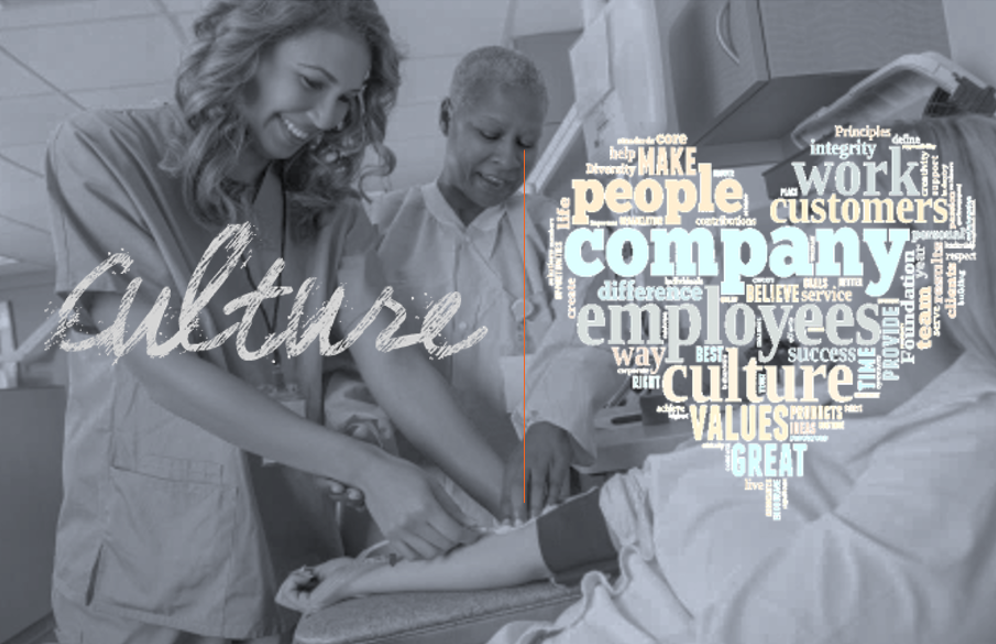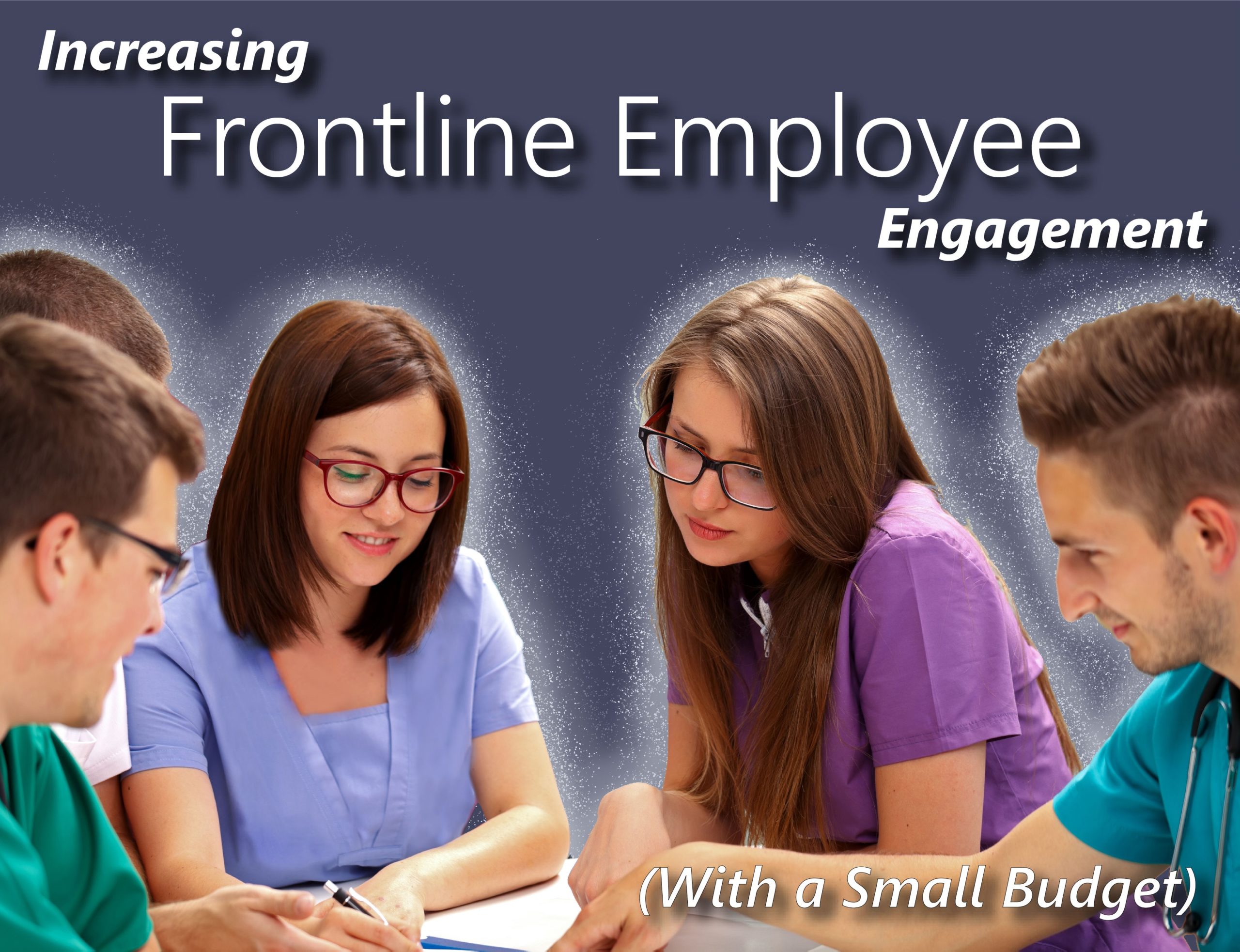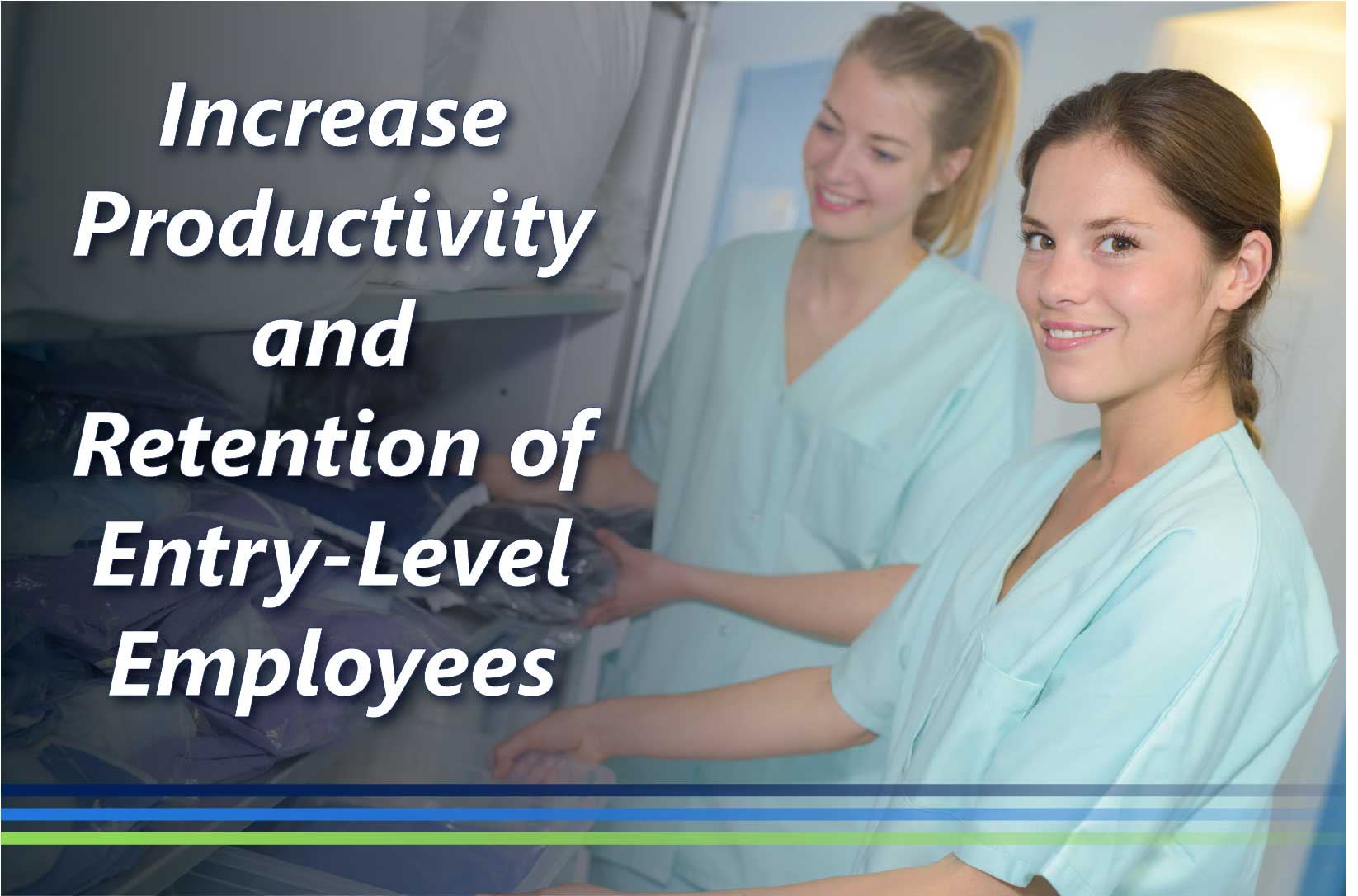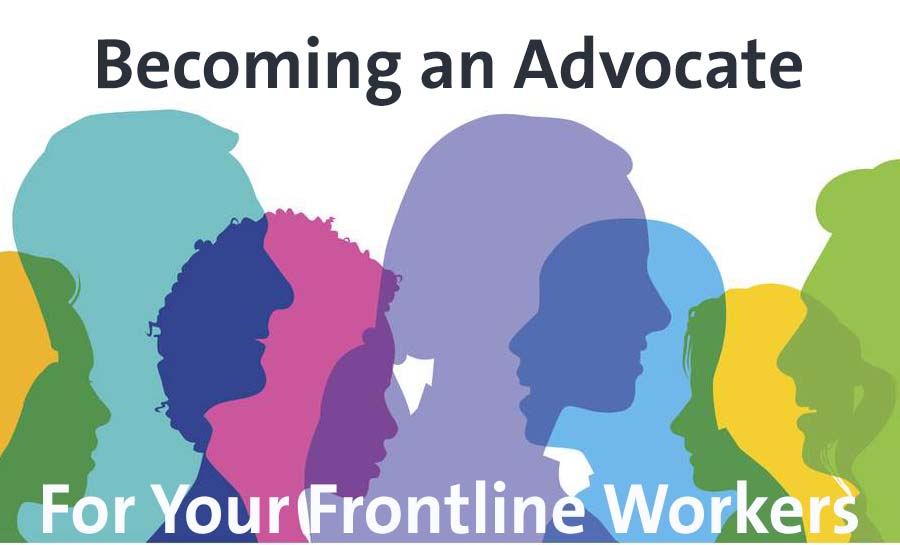Most healthcare leaders agree that a productive culture is a pillar of hospital success. But there are many organizations with lofty-sounding “corporate missions” that have less-than-stellar work environments for frontline employees. Frontline employees can sometimes be an afterthought in culture development, but they are often the voice and the heart of the hospital to patients and families.
To improve culture, ask yourself – are we supporting our frontline employees’ career and life goals? Is there a sense of belonging and shared commitment among employees about how they serve patient’s needs? Do we have employee programs that are accessible and build support for our organization’s culture?
Here are some nationally recognized hospitals that are super-serious about maintaining a winning Frontline Healthcare Employee culture and some of the steps they have taken:
ROOT TALENT DEVELOPMENT INTO BUSINESS PRIORITIES
With focus on patient experience and reduced costs, employers are making a business case for building talent by aligning workforce training and education programs with strategic areas of business impact. Developing talent needs to go further than just a “feel good” public relations objective, so it’s important to measure the success in numbers. Quantitative metrics examples are recruitment costs, reduced turnover, or preventable re-admissions. Qualitative metric examples are new employee competencies in taking care of patients, and improved team climate relationships in a unit.
Yale New Haven Hospital is a 1,541-bed facility that serves the entire state of Connecticut, ranked by U.S. News & World Report as one of the top 50 hospitals in the country in 11 different specialties. YNHH offers a wide range of career development services to its frontline workers; its basic skill development programs include entry-level employee communication effectiveness workshops, conflict management, and effective presentation skills.
With 4,000 trainees annually, these trainings help prepare entry-level hospital employees to meet high quality and safety standards and perform in their roles more effectively.
Read more about Yale New Haven Hospital and their efforts.
HIRE FROM THE COMMUNITIES YOU SERVE
When hiring, make an effort to recruit underrepresented members of the local community and demographics that mirror patient populations. This could include a focus on improving lives of local community members facing barriers to employment, or disabilities. Be a part of local workforce boards and other organizations with local outreach.
University Health System, in San Antonio Texas, is an organization committed to equitable talent development. It hires many community members who do not speak fluent English. Their career development programs have expanded to keep pace with the evolving language and literacy needs of their employees, including offering onsite English for non-native speakers.
With their community hires, University Health Systems executes on-the-job learning and career development system through the ECHO (Expanding your Career and Health Opportunity) program, to give mid-level healthcare workers the chance to move into more advanced roles in the organization.
Read more about University Health System and their hiring.
COMMITMENT TO ADVANCING FRONTLINE WORKERS
Advancing frontline hospital workers, or “growing your own” will help with obvious staffing and orientation costs. But it will also help maintain organizational knowledge and culture. And now with the economy closer to full employment, a commitment to advancing your own workers instead of looking outside is even more important. Apprenticeships and training opportunities may be a way to turn frontline workers into prime candidates to fill mid-level positions that are open.
At Mercy, the country’s fifth-largest Catholic healthcare system, frontline healthcare employee development is at the core of business strategy. To reach its goals, Mercy operates a Lowest Paid Worker Committee to bring together senior leaders to develop and implement strategies to improve wages and opportunity for frontline workers. Lynn Britton, Mercy’s President and CEO, leads the Lowest Paid Worker Committee. “We invest in the development of frontline workers to help them realize their talents and to support their professional and financial advancement.” Mercy tracks and reports participation in their employee advancement programs yearly, monitoring scholarship programs, tuition advance programs, School at Work® (SAW) graduations, and transportation programs. Mercy measures business impact, citing that 32.5% of School at Work® graduates have advanced into new roles and 9% have enrolled in higher education.
Read more about Mercy and their commitment to advancing frontline workers.
WORKFORCE PLANNING AND ANALYTICS
Supportive workforce practices require both qualitative and quantitative data, necessitating the capacity for data collection and analysis. HR should use workforce data to track programs, assess impacts, and analyze future needs. Forecasting tools focus on specific occupational groups, and includes head count, turnover info, recruitment metrics, vacancy rates, employee engagement, and required skills. Using workforce planning and analytics to anticipate future need is especially important when a community is reaching full employment levels.
Norton Healthcare, Louisville KY’s leading healthcare provider, is a healthcare pioneer in integrating workforce investments with business impact. Investing over $11 million a year in staff education and development, Norton’s transformational approach to workforce development integrates with its strategic staffing priorities. Norton monitors future staffing needs, patient data analysis, internal and external partnership impact, and the impact of its investments on bottom line ROI measures. In 2017, Norton Healthcare did an exhaustive study on ways leading healthcare organizations in the U.S. use frontline investments to improve six key business metrics: Workforce Availability, Employee Competency and Advancement, Employee Engagement, Patient Experience, Community Impact and Quality, and Safety.
Read more about Norton and their analytics.
SUPPORTIVE HR POLICIES
When a healthcare organization is committed to supporting entry-level hospital staff, they may offer benefits and initiatives designed to ease employee burden, through EAP or HR-direct initiatives.
These could include personal counseling, medical premium assistance, financial coaching, affordable child care, tuition programs, onsite clinics, low-interest loans, transportation subsidies, or employee crisis funds.
UnityPoint Health in Iowa is a leader in providing services to advance frontline employees and help with life events. In fact, UnityPoint’s mission is “Come for a job, stay for a career.” UnityPoint offers a menu of supportive HR options such as tuition assist programs, career coaching, free transportation, and flexible scheduling.
Read more about UnityPoint and their efforts.
CAREER EXPLORATION, COACHING, AND MENTORING
Career exploration, coaching, and mentoring are steps that should be integrated with building talent and advancing frontline workers. Once frontline health workers have developed skills and see opportunity that is available in the organization, have HR or a professional mentor show where they can go to learn more about new positions. Have a commitment to employee coaching, and promoting talent from within.
UC-Davis Health offers career coaching and an array of educational opportunities designed to help employees develop skills and advance careers. UC-Davis Health uses School at Work® as a combination of career exploration and skill coaching, working with employees to define goals and connect them to internal and external services. UC-Davis Health has found this has reduced recruitment and on-boarding costs. UC-Davis Health was also interested in developing Administrative Assistants and has invested in this employee group.
Read more about UC-Davis and their coaching programs.
DIVERSITY/INCLUSION STRATEGIES
A great way to support a top-notch frontline employee culture is to invest in programs that promote diversity, foster collaboration, and participation and respect in the organization. Frontline employees are the largest group of workers in most hospitals, so be intentional about achieving more diversity at the apex of the health system.
Main Line Health in metro Philadelphia has been recognized by U.S. News & World Report as one of the top health systems in the country. Main Line organized a Diversity, Respect, & Inclusion Strategy Team to make sure it was developing leaders in the organization who mirror the demographics of metro Philadelphia. This team works to break HR obstacles, tracks entry-level employment patterns, and measures impact of employee advancement strategies like SAW, ECHO, and its internal Career Advisor program.
Read more about Main Line Health and their mission to increase diversity at the top of the apex.
GROW TALENT FROM WITHIN
Many C-Suite hospital leaders still view learning and development as cost centers instead of strategic investments. When the strategic apex of any organization looks at low-wage associate investment this way, expectations and leader involvement stay low, leading to little or mixed clarity of how enabling talent fits in with company goals. This is a mistake, because when learning happens throughout the entire organizational chart, all associates start to see themselves as “owners;” and when HCAHPS surveys are taken, you want employees who see themselves as imperative
stakeholders.
East Alabama Medical Center (EAMC) has a longstanding tradition of growing their own associates to carry out the organization’s mission of “high quality, compassionate healthcare.” In fact, a V.P. started as an orderly 35 years ago, proof that senior leadership has walked the walk. EAMC is in a small metro market, so hanging onto their best employees is especially important. EAMC invests in skill and education assessments and frontline worker learning programs, building these tactics into the mission. EAMC has built a nationally recognized culture of internal talent growth. Learn more about EAMC.
MEASURE RESULTS!
TriHealth has done the best job of measuring RoI that we’ve seen in 14 years of working in the healthcare workforce development space. The importance of measuring results sounds obvious, but this types of analysis is usually not done. If HR leaders do not show ROI and value, programs can be terminated in later years when budgets get tighter. If you’ve worked to advance turnover/retention rates, days required to fill vacant positions, overtime costs, and Temp agency costs, show it!
TriHealth Inc is Cincinnati’s fifth largest employer, with two acute care hospitals and more than 120 locations. TriHealth was recently recognized by Working Mother magazine as one of the “100 Best Companies for Working Moms,” a designation it has received 9 times. TriHealth uses CareerCare, a web-based career exploration tool for entry-level worker participants, and School at Work® to provide on-site learning opportunities to increase basic literacy, mathematics, and interviewing skills. In 2013, TriHealth did a large 4 year ROI study to show how these investments in entry-level workers had paid off. TriHealth saw huge increases in promotions and employee wage gains, plus savings from turnover costs during the four years of the study. TriHealth also had better job satisfaction scores during that time. Read more about TriHealth.
Building a great culture and support for Frontline Health Employees will not happen overnight, but paying attention to what industry leaders are doing can be a great source of ideas and inspiration! Investing in entry and mid-level nonclinical employees who interact with your patients will pay off, so be sure to measure and communicate results.
With these types of tactics, your hospital could see gains in workforce availability metrics, employee, engagement, improved patient experience, and community impact. Set your organization up for success with a winning and supportive Frontline employee culture!
To see case studies on any of these health systems, please email info@catalystlearning.com and we will gladly send you further details. Thank you to the National Fund For Workforce Solutions and its CareerSTAT Frontline Employer Champion program for recognizing these institutions who invest in their entry-level healthcare employees.










